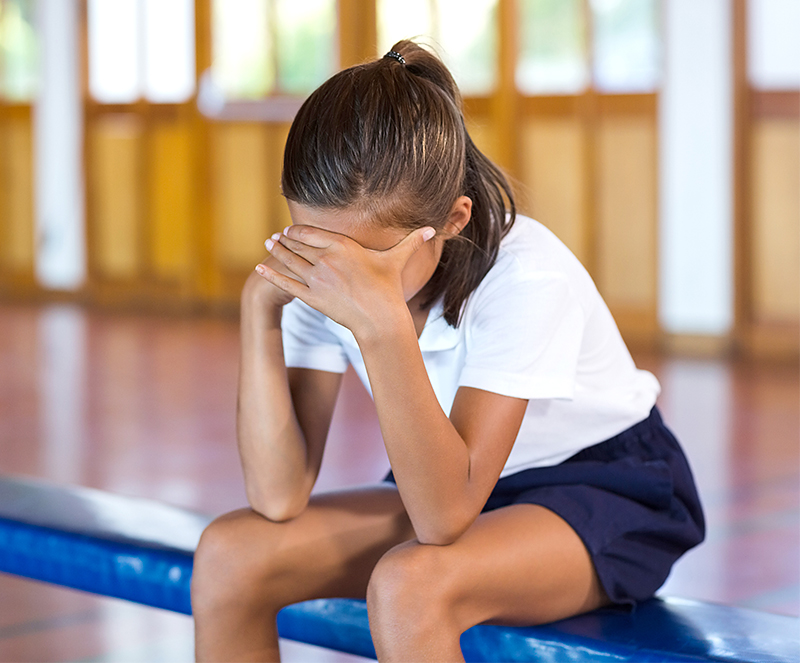I am a gym class dropout.
As an awkward, unathletic, queer teenager, I was a prime target for bullying in high school gym class. Each class began with the same ritual of running around the gym, the jocks lapping me a fifth and sixth time, snickering at how slow I was. In Grade 9, I intentionally injured my hand just to get out of playing volleyball for a week. When I could drop gym class entirely in Grade 11, foregoing the drain on both my sanity and my grades, it was an easy decision.
I'm not alone. Recent studies reveal that students picked last in gym class or teased by classmates are significantly less likely to be physically active.
That's a problem, given that fewer than one in five school-age children in Canada are getting the recommended 60 minutes of physical activity a day and that obesity among young people - with its many health implications - is the highest it has ever been.
In a 2009 study, physical education expert Billy Strean surveyed and interviewed 24 men and women between the ages of 21 and 64 from Canada and the United States about their memories of phys-ed teachers. He found some participants were still deeply troubled by experiences 30 years earlier.
"One of the things that surprised me was the duration and the intensity of people's memories," he says.
"It's not just academic. It could affect someone's health for the rest of their life," says Strean, who teaches future phys-ed teachers through the Faculty of Kinesiology, Sport, and Recreation.
Strean offers these tips on how parents and educators can help create more positive physical activity experiences for young people and pave the way to help them become healthier, more active adults.
1. Variety is key
The traditional gym class curriculum tends to focus heavily on competitive sports such as soccer, softball, or track and field. Strean suggests this bias toward competitive, skill-based sports can be detrimental to kids who don't naturally excel in them. Providing a wider variety of activities can help encourage physical activity. "If you happen to have an experience that predisposes you to that small set of sports, it can be positive for you. But if there's a mismatch, you may end up dreading it," Strean says.
Introduce your child to a variety of athletic activities, including individual pursuits like dance, yoga and personal fitness. This gives them a greater chance of finding a sport that excites them and that they feel comfortable doing.
2. Show empathy
It's essential to empathize with kids who are struggling in gym class, says Strean. In the university course he teaches, he has soon-to-be phys-ed teachers play an unfamiliar sport with difficult technical challenges so they, too, can experience how frustrating it can be. "You have to notice how much it sucks [to fail], and imagine if every day, when you're going to phys-ed class, that's what you were anticipating," he says.
The best way to exercise empathy? Listen carefully, ask questions and avoid assuming that a child's experiences are the same as yours were.
3. Remove the locker-room barrier
U of A student Finn Arnison dropped out of high school phys-ed classes despite his athleticism and love of soccer. As a transgender student, he often felt out of place in the girls' locker-room or being grouped with the girls during class. "I was really uncomfortable changing around anyone else," he says.
He's not the only one who feels this way. A 2011 survey of more than 3,600 high-school-age Canadians found that half of gender and sexual minority youth and 59 per cent of female sexual minority students considered gym locker-rooms to be unsafe spaces in their high schools. Locker-rooms can be uncomfortable for all kinds of reasons. Creating welcoming, co-ed teams and gender-neutral changing facilities can help all students feel more comfortable participating in physical activity.
Consider the options with your child. Maybe it's avoiding the change rooms altogether, using a bathroom stall or wearing athletic gear to school that day. Other options include talking to administration or phys-ed teachers to come up with alternative solutions.
The good news?
Even for gym class dropouts, there's a way back to physical activity. While bad experiences past can have kids shying away from the competitive aspects of sport, there are a plethora of ways nowadays to be active.
"It's a reasonably common story," Strean says. "Someone says 'forget about this phys-ed stuff,' and then they discover something more fitness-related." Whether it's yoga or weightlifting, barre class or pickle ball, it's never too late to make physical activity a lifelong habit.

We at New Trail welcome your comments. Robust debate and criticism are encouraged, provided it is respectful. We reserve the right to reject comments, images or links that attack ethnicity, nationality, religion, gender or sexual orientation; that include offensive language, threats, spam; are fraudulent or defamatory; infringe on copyright or trademarks; and that just generally aren’t very nice. Discussion is monitored and violation of these guidelines will result in comments being disabled.